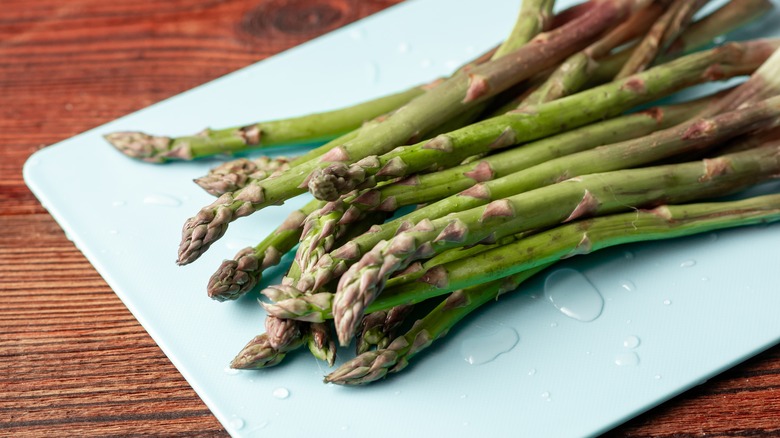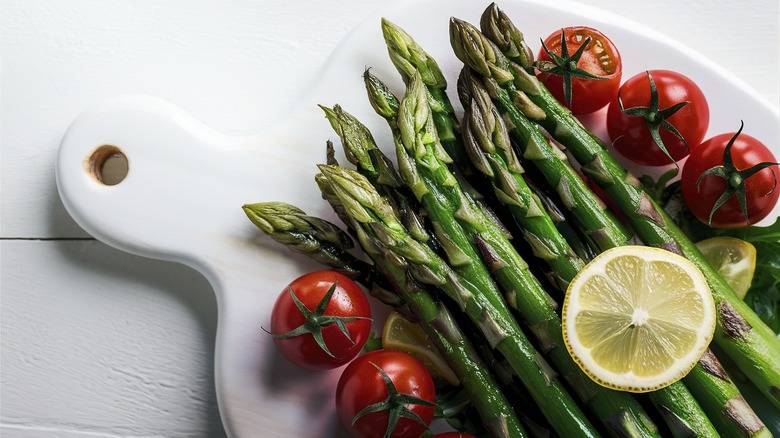The Best-Tasting Asparagus Is The Kind That's Been Properly Braised
There are many ways to enjoy asparagus, whether raw in a salad, grilled, roasted, sauteed, and more. But we'd argue the best way to prepare asparagus is to braise it. Braising is a simple method which yields tender and deeply flavored asparagus. Asparagus can be served warm or at room temperature with a lemony hollandaise sauce or served simply in their own cooking juices. There are many recipes for asparagus, and to get the most out of the slender stalks, they need to be properly prepared first.
When you buy asparagus, make sure that the buds at its tip are closed. Buds that are open indicate the asparagus is old. Defying popular belief, pencil-thin asparagus aren't as tasty as the thicker ones, and they can also be a bit stringy. Fatter asparagus spears are more tender and hold up well to braising.
The first step in prepping the asparagus for braising is trimming off the white, woody ends with a knife. Next, peel the asparagus with a vegetable peeler, which Julia Child encouraged viewers to do on "The French Chef." It really is worth the few minute's effort to peel the asparagus for both appearance and flavor enhancement. You can then toss the pretty peels and lettuce in a salad bowl for your dinner's side salad.
The key to braised asparagus is butter
Butter enriches any vegetable, especially for braised asparagus. The waxy outer skin retains the asparagus's inner moisture, and once it's removed, the asparagus is at its most vulnerable for absorbing butter. Braising asparagus really couldn't be easier. Add the peeled asparagus to a pan of water, vegetable or chicken broth, salt, and a good-sized knob (about 3 tablespoons) of butter. Cover and simmer the asparagus for 7 to 10 minutes until the asparagus is tender. Remove the lid, and continue cooking until the asparagus has absorbed all the liquid and butter and is shimmeringly glazed. Braising transforms asparagus on multiple levels, making it lovely to look at and lovely to eat.
There are three varieties of asparagus: green, purple, and white. Purple asparagus has more natural sugar than green asparagus and is sweeter. White asparagus is grown in a special way that prevents it from developing color. White asparagus has a thicker outer skin, which takes more effort to peel, and in German cookery, is usually boiled until tender. But white asparagus can also be braised in the same way as green asparagus, and its flavor will be lighter and more delicate. Depending on where you live, asparagus is available from February to June. Try the simple braising method when it's at its freshest for the best-tasting asparagus you'll ever eat.

